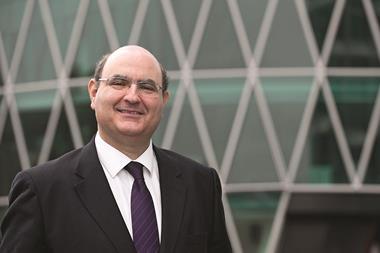The inaugural pension fund stress tests carried out by EIOPA were a valuable exercise, according to the Actuarial Association of Europe (AAE).
It has come out in support of the development of a common, market-sensitive methodology but disagrees with the blanket use of the risk-free discount rate.
One of the main achievements of the stress tests, according to the AAE, is their being able to show the effect, in addition to the expectation, of adverse scenarios.
It said the results were unsurprising given the magnitude of the financial shocks specified by EIOPA, showing that the deficit in defined benefit (DB) schemes would increase significantly if these shocks materialised, especially on the basis of the common methodology adopted by EIOPA.
However, AAE chief executive Ad Kok said the stress tests raised important questions about how the various pension stakeholders would be affected should further stresses occur in reality.
“Who would take the burden?” he asked. “Who would take a financial loss? Would it be the sponsoring company, having to increase contributions? Would it be the retirees, taking reduced pensions?
“Those are the relevant questions.”
Under EIOPA’s second adverse scenario, incorporating sharp asset prices falls and a commodity “negative supply shock”, occupational pension funds would face a €773bn deficit on the basis of the supervisory authority’s common methodology.
The AAE also noted that EIOPA did not consider that DB funds posed a systemic risk to the EU, “although it is clear increased contributions and/or reduced benefits would have some impact on the economy of member states where these arose”.
Speaking upon the release of the stress test results, EIOPA chairman Gabriel Bernardino said it was too early for it to draw definitive conclusions about the potential financial-stability impact of occupational pension funds and that more work needed to be done on this.
Falco Valkenburg, chairperson on the AAE pensions committee, said EIOPA was also planning to continue to work on its common methodology, and that the AAE supported this.
“It is very important to get to grips with all the building blocks of a pension deal between an employer and the employees, including how it is financed,” he told IPE.
“And that is exactly what this methodology is trying to achieve.”
However, the AAE disagrees with how it has been implemented so far, namely via the use of a risk-free discount rate for valuing liabilities, added Valkenburg.
“A risk-free rate is fine for fully guaranteed pension contracts, but some have conditions, and, in those cases, the risk-free rate inflates liabilities and hence deficits,” he said. “That’s the technical problem we have, but it is all part of the further work to be done.”
In addition to trying to improve the valuation methodology, Valkenburg said it would be worthwhile to work on more forward-looking methods.
Philip Shier, chairperson at the AAE, said “appropriate” stress tests could help agree a pension deal by providing “a common understanding of the risks inherent in the pension scheme, and agreement as to how these should be managed”.
DB occupational pension funds should undertake their own stress tests as part of their risk assessment, added Shier, “reflecting their specific features”.
He flagged the likelihood of risk assessments becoming mandatory under the revised IORP Directive, which is still to be debated in trialogue.












No comments yet